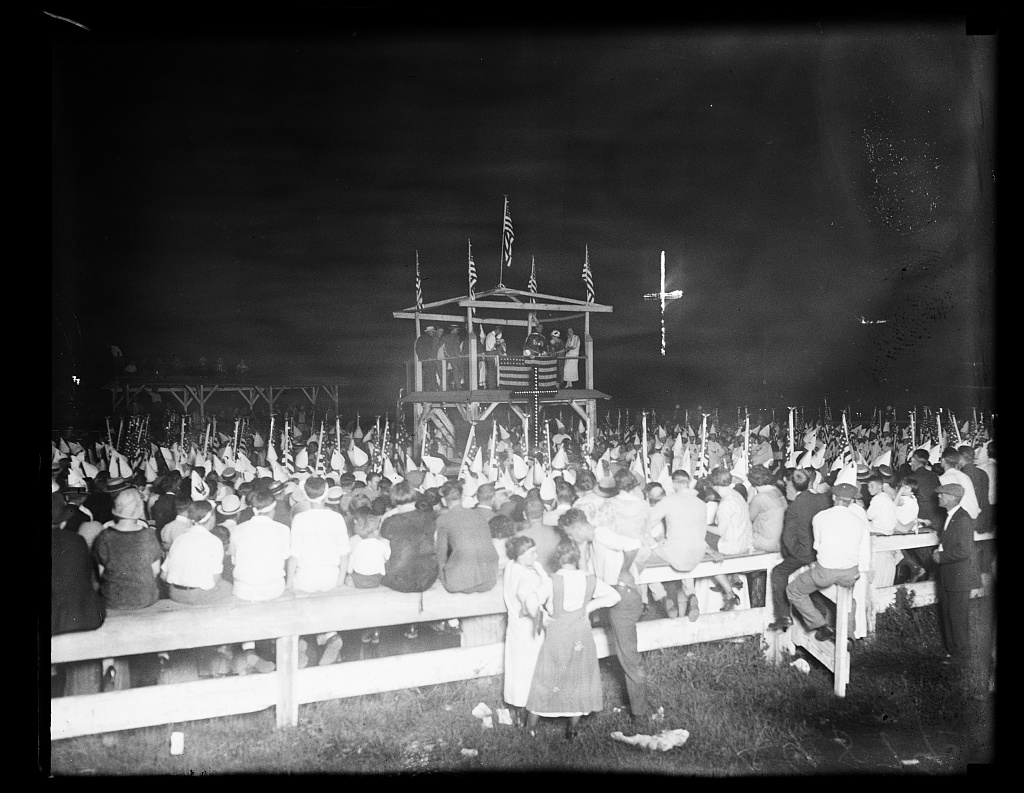Few would argue that when the United States joined the fight against Nazi Germany it fought a good war. Fewer still recognize the irony that even as American GI’s helped to liberate Europe, the regime they fought against had been inspired in no small measure by American laws and policies.
James Whitman’s Hitler’s American Model makes that connection. In this book, Whitman examines not only the development of the Nazis’ Nuremburg Laws, but demonstrates that Nazi lawmakers used the miscegenation and segregation regimes, especially those of the US South, as models for these infamous laws. Rather than claiming that the Nazis simply copied the United States’ segregation laws and exclusionary policies, Whitman argues that the Nazis borrowed the ideas behind the laws in order to create a German version of them which would be accepted in the anti-Semitic atmosphere of the Fatherland.
Whitman’s monograph challenges historians like Richard Bernstein, Jens-Uwe Guettel, and Mark Mazower who have argued that the creators of the Nuremberg Laws and the Nazi blood laws viewed America as only one of many countries with racist legislation, and that there was, therefore, no direct connection between the Nazi laws and the United States. Instead, as Whitman demonstrates, the Nazis looked to the United States with unbridled admiration for the way in which the latter kept “bloodlines pure.” “Nazi lawyers regarded America,” Whitman writes, “as the innovative world leader in the creation of racist law” (p. 5). This argument revolutionizes the discussion of comparative racism and our understanding of the influence of the United States upon the Third Reich.

Whitman’s work is a short book - it has only two chapters and a brief conclusion. He begins by detailing the adoption of the swastika as the symbol of Nazi Germany and the SS Bremen incident where anti-Nazi New York Jews boarded the ship and ripped down the Nazi flag and tossed it into the Hudson River. Whitman argues that this event was cataclysmic in that it caused the US to become even more connected with Germany and the racist Third Reich. Throughout the rest of the first chapter, Whitman traces the effects that the first two Nuremburg Laws—the Flag Law and the Citizenship Law—had on Nazi Germany. He details the Nazi idea that America was the “Global Leader in Racist Immigration Law.” Finally, he concludes this section by detailing the connections between the first two Nuremburg Laws and the American policy on nationalism and citizenry.

In chapter two, Whitman elucidates the strongest connection between the Nazi Blood Law, the third of the Nuremburg Laws, and the American racial and anti-miscegenation laws prevalent throughout the United States. He displays the influences that American racial policies had on the Prussian Memorandum, the predecessor to the Nuremburg Laws. Whitman goes further still to show that in a July 5, 1934 meeting between Nazi lawmakers, judges, and high-ranking officials, these men decided that the American racial policies were too drastic and disorganized. Whitman demonstrates that the creators of the Nuremburg laws wanted their racial legal statutes to be flawless, crisp, and direct. The evidence of this, Whitman shows, is through the Nazis’ viewpoint on the American “One-Drop Rule” which states that if anyone had one drop of African blood in them, they were considered an African-American.
Whitman’s well-researched monograph looks primarily at the years between 1880 and 1930, and at episodes the Chinese Exclusion Act of 1888, the Immigration Acts of 1921 and 1924, and many state constitutions of the Jim Crow South. He makes a persuasive case for the interconnectedness of race laws in the United States and the Third Reich. Whitman weaves together a story of exclusion within the United States which, in turn, formed the basis of the Nuremburg Laws.
Along with the American sources, Whitman utilizes an array of German sources, including the Prussian Memorandum, Mein Kampf, and a 1934 transcript of a meeting of Nazi legal authorities, all of which point to American progenitors for German policy. Moreover, Heinrich Krieger, a driving force behind the Nuremburg Laws, had studied race law at the University of Arkansas during the 1920s and drew explicit inspiration from the South’s Jim Crow Laws. Krieger’s 1936 book Race Law in the United States built upon the anti-miscegenation laws of the United States to create the Nuremburg Laws.
Whitman’s argument could have benefited from a deeper consideration of other models to which the Nazis may have looked and from a consideration of the larger European context at this time, when countries such as France had racist statutes on their books as well. A broader, more expansive search into more transcripts of the months-long process of creating the Nuremberg Laws might reveal additional sources of inspiration for the Nazis. Whether or not the United States was the sole inspiration for the laws that led to the Holocaust remains to be determined.
Another problem with the monograph is that it only briefly mentions some of the individual state constitutions that incorporated blatantly segregationist laws into their legal systems. Rather than a thorough examination of even a few of these, Whitman lumps thirty of them together and provides a brief summary of them. Whitman’s study could have more thoroughly examined at least a few of these constitutions in greater depth and perhaps even connected individual constitutions and legal statues to those referenced in the transcript of the June 5, 1934 meeting of prominent Nazi legal experts. This would provide for a more direct connection to specific documents rather than a sweeping generalization of numerous statutes.
Nevertheless, the argument that Whitman does provide deserves broad and serious attention. It provides a starting point for deeper examination of the Third Reich’s legal inspirations from the American system. In refuting many who studied the Nazis’ legal implementations prior to this work, Whitman allows the conversation about how the United States helped shaped Nazi Germany to move in a new direction.
